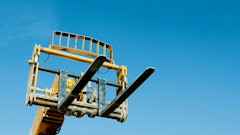
Last month, we covered the proposed tax bill and I hope you acted on my suggestions to spend the time and money to gain a full understanding of your tax position for 2021 and expected position for 2022 based on your projected operating results. I hope you paid special attention to equipment transactions in terms of expected sales and purchases going into 2022 and 2023 and beyond. In short, how are you going to handle the sales of equipment with zero tax basis?
I mentioned one other program I want you to consider. It is also tax related, except it refers to state and local taxes.
There is little doubt that the most complex tax issues facing businesses today are state and local taxes post-Wayfair. The ruling in South Dakota vs. Wayfair* caused states to believe there was much more tax revenue to be had if they scaled up their process to identify companies doing business in their state. Thus, every time you cross a state line to do business, you fall under the economic nexus rules set up by the state to find new “tax delinquent” companies that possibly owe sales or income taxes.
Speaking from experience, I can tell you that you do not want to receive one of these notices, because the agencies behind them will drive you nuts and threaten to seize your bank account if they have to. And when you see what you owe, you will be shocked to say the least, because the penalties and interest are many times what you owe.
Consequently, I asked Jim Margner, a state and local tax expert, to prepare a list of questions and considerations for contractors to give you an indication if you have any tax risk in the states in which you are doing business (scroll to list below). I suggest you spend some time going over these points. Believe me, if you are working in other states, their tax agencies will find you by crosschecking checks being issued to you by customers.
You can answer the questions and send your responses to Jim (contact info below) if you need someone to walk you through problem areas. Jim is semi-retired and can provide a very cost-effective review of your situation.
On to other topics…
Equipment Costs and Supply Constraints
I received a phone call from a reader who just wanted to let me know that he has a fleet of equipment and plans on keeping it because it still works and is fully paid for. Thus, it doesn’t contribute much to his fixed costs even if some units have low utilization rates. Tough to argue with that.
But at some point, the cost to operate that equipment will be more than it is worth. Maybe then we can have a conversation about purchasing or renting a portion of the fleet with low utilization rates. One other potential argument I can make is that the older equipment is not as efficient as newer models, which tend to be more productive.
Calculate Equipment Costs to Assess When to Own vs. Rent
I know many of us are expecting the “transitory” price increases for materials to stick around for some time to come. Consequently, I’ve been hearing about businesses stockpiling materials to avoid higher prices as well as supply chain issues. Not a bad plan as long as prices keeping going up.
However, at some point, prices will peak and start a downward trend back to a realistic level that we are used to (or at least close to that). But what happens if prices turn around faster than expected? We would have a deflation moment for materials that would bite those that stockpiled goods to avoid price increases. Can’t happen, right?
What if developer Evergrande sets China on the path to experiencing a 2008-2010 sub-prime housing event? China would find itself in a similar situation to what the U.S. experienced when investors were buying up houses to swap them at higher prices.
Currently, first-time homebuyers in China equate to about 15% of the real estate market, when it was more like 70% in 2008. Sound familiar? Should a credit problem develop, the demand for housing materials could drop dramatically since China purchases about 20% of materials for construction purposes. The result would be excess supply hitting the market and deflation caused by falling material prices.
The bottom line here is the need to carefully plan for 2022 and beyond because there are still balls in the air that could either help or hurt us. I still believe lowering fixed costs is a must. A move to be more productive (doing more without adding to cost) should also be investigated with meaningful changes implemented.
In addition, get your system provider into your office to find out if you are taking advantage of all of the data being generated to help you run your business. You may find an aspect of the system can help streamline certain procedures used to manage your work. If you spend time reading industry publications, there is no doubt there are new ways out there to track the cost of both equipment and personnel.
Finally, if you are doing things the same way you were 10 years ago… Well, you can finish the sentence.
* On June 21, 2018, The United States Supreme Court ruled 5-4 in South Dakota v. Wayfair that states can mandate that businesses without a physical presence in a state with more than 200 transactions or $100,000 in-state sales collect and remit sales taxes on transactions in the state. (AICPA.org)
**Jim Margner can be reached at [email protected].





























